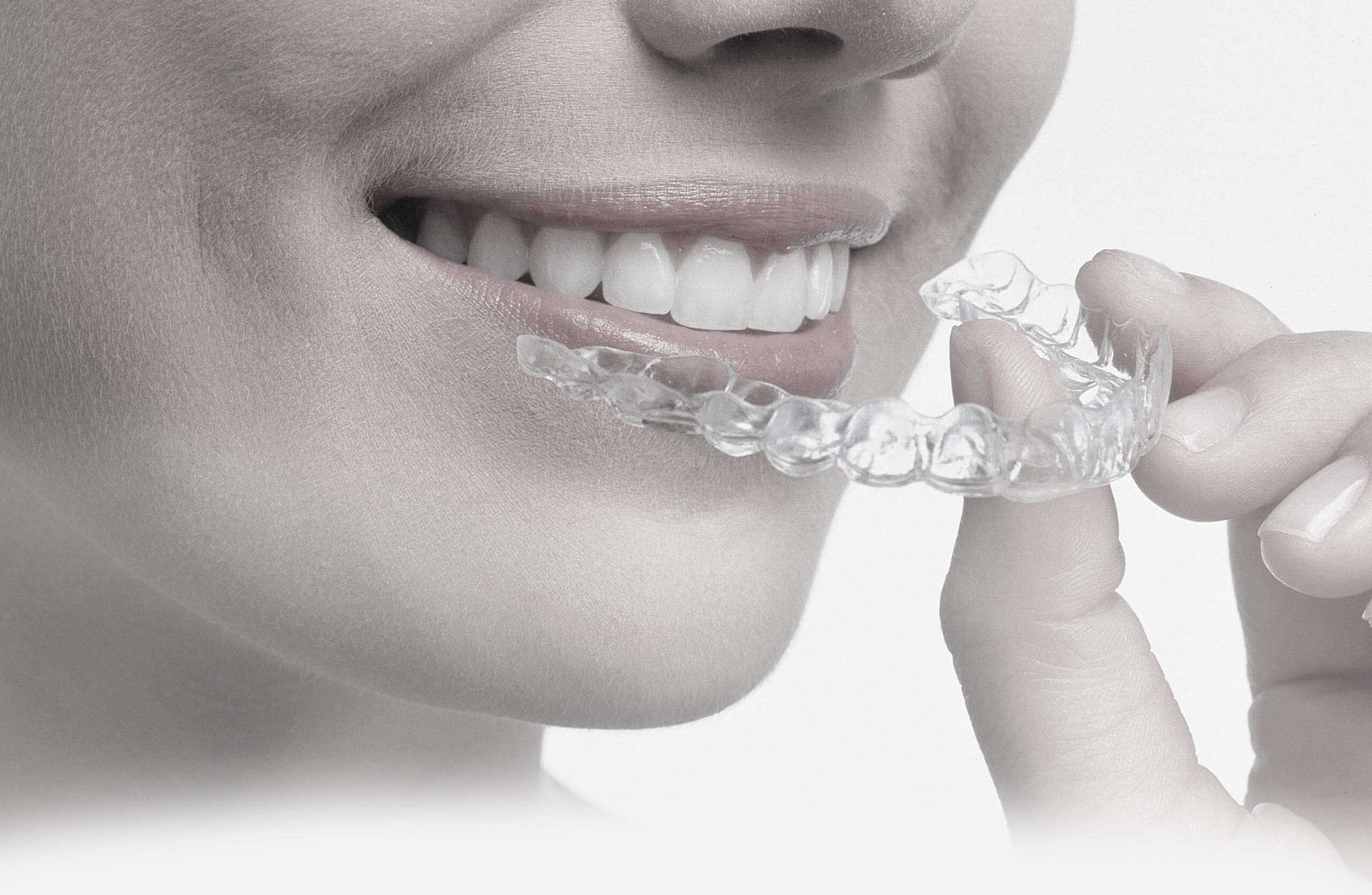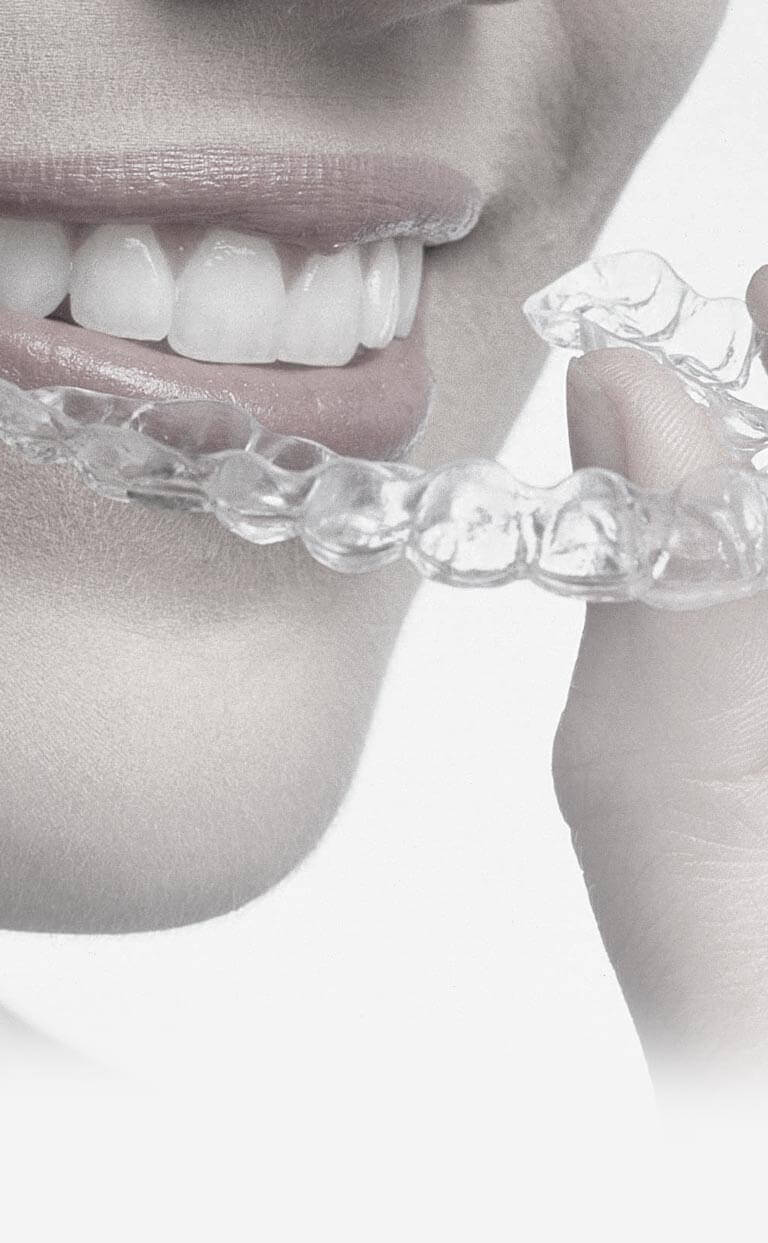

Modern State of the Art Orthodontic Treatments in Germany


Modern state of the art orthodontic treatment in Berlin
BERLIN-KLINIK Orthodontic Department offers modern Orthodontics is a specialized branch of dentistry that diagnoses, prevents, and treats dental and facial irregularities called malocclusions. Orthodontics includes dentofacial orthopedics, which is used to correct problems involving the growth of the jaw. Crooked teeth and teeth that do not fit together correctly are harder to keep clean, are at risk of being lost early due to tooth decay and periodontal disease, and cause extra stress on the chewing muscles that can lead to headaches, TMJ syndrome and neck, shoulder and back pain. Teeth that are crooked or not in the right place can also detract from one’s appearance. The benefits of orthodontic treatment include a healthier mouth, a more pleasing appearance, and teeth that are more likely to last a lifetime. A specialist in this field is called an orthodontist. Orthodontists receive two or more years of education beyond their years in Dental school in an approved orthodontic training program. Developments in orthodontics include more convenient, comfortable and less noticeable appliances such as tiny ‘mini’ brackets ; ‘space age’ wires for braces developed through NASA, which require fewer replacements and,consequently, fewer appointments; clear, tooth-colored braces, or multi-colored brackets; retainers with a favorite logo or photo; “lingual” braces connected to the back of teeth for completely invisible treatment; and computer technology to diagnose and plan treatment.
The 'state of the art'
At BERLIN-KLINIK Orthodontic Department the ‘state of the art’ latest technology is provided to our patients, with the most modern techniques orthodontics has to offer.
You can find orthodontics topics under under:
Only a healthy functionable and good looking occlusion Improves your smile – a good smile adds up to the personality of an individual. A fabulous smile makes you attractive and also improves one’s confidence levels. Braces improve your smile and therefore improve your appearance. Improves chewing – Teeth are an important part of the digestive system. Chewing of food by the teeth is the beginning of the digestive process before the food is passed on to the tummy. So having a good bite improves the function of the teeth. Prevents other dental problems – Crooked teeth prevent maintenance of good oral hygiene. This can lead to other dental problems such as dental decay and gum diseases. Psychological benefits – Not having a good smile can adversely affect the appearance and therefore the mental well being of an individual. It tends to make one an introvert and highly self-conscious. Risk of trauma – Teeth that are protruding increase the risk of traumatising them. This is more often in children during play,or,due to accidental fall.
Your dentist or orthodontist at BERLIN-KLINIK Orthodontic Department can determine whether you can benefit from orthodontics. Based on diagnostic tools that include a full medical and dental health history, a clinical exam, plaster models of your teeth, and special X-rays and photographs, an orthodontist can decide whether orthodontic treatment is recommended, and develop a treatment plan that’s right for you.Braces are used to move teeth into the ideal position and align how they bite together, known as occlusion. Malocclusion is used to describe the misalignment of teeth between the upper and lower dental arches, using the first molars as a reference point. Many different types of appliances, both fixed and removable, are used to help move teeth, retrain muscles and affect the growth of the jaws. These appliances work by placing gentle pressure on the teeth and jaws. The severity of your problem will determine which orthodontic approach is likely to be the most effective. Braces – Classic and well known orthodontic treatment. Orthodontists align teeth with braces by applying constant pressure in a desired direction. The pressure is adjusted at prescribed intervals over the course of the orthodontic treatment, which can last from one to three years or longer depending on the severity of the patient’s case. There are several types of orthodontic braces available to patients, including the traditional metal braces and new clear braces. Orthognathic orthodontic-surgical reatment is needed for those patients who have more severe skeletal and dental problems such as a jaw size discrepancy either horizontally, vertically or both, can benefit from a combined approach of both orthodontic treatment and surgery. This is called orthognathic surgery, and the results can be amazing and life changing. It is only suitable for a few patients and can be done with both conventional braces and lingual braces.
There are three different types of misalignment, defined by the Angles Classification Method. Developed by Dr. Edward Angle, considered by many the founding father of orthodontics, this method of classification is widely used by dentists around the world:Class I – Considered the ideal relationship between the upper and lower teeth. Crowding or spacing may be present with Class I bite. Class II – Commonly known as “over bite.” The patient’s lower first molar is positioned posterior, or more towards the back of the mouth. The upper jaw, or maxilla, appears to protrude forward. Class II bite has two sub classes that also describe the position of the upper front teeth, but in both cases, the molar relationship is the same. Class III – The patient’s lower first molar is positioned anterior, or closer to the front of the mouth. The lower jaw, or mandible, protrudes forward, and is best described as an “under bite.” Best known in the type of face like Arnold Schwarzenegger.
Most malocclusions are caused by hereditary factors that affect the contours of the face and the size of the teeth and jaw. The most common cause of malocclusion is a disproportion in size between the jaw and teeth or between the upper and lower jaws. A child who inherits a mother’s small jaw and a father’s large teeth may have teeth that are too big for the jaw, causing crowding. While some patients may have the ideal bite, they may suffer from varying degrees of crowding or spacing, another factor associated with a misaligned bite. Crowding is a condition that causes the teeth to overlap, rotate, and in some cases, grow into the incorrect position in the mouth, or in more extreme cases, cause the tooth to become trapped in the bone. Crowding may be caused because the dental arch is too small for the adult teeth, or the adult teeth are larger than normal. Crowding may also be caused by losing the primary or baby teeth early, or retaining them in the mouth longer than normal. These factors may inhibit the adult tooth, forcing it to erupt or grow into an incorrect position. Crowding makes it difficult to brush and floss the teeth correctly, possibly resulting in tooth decay or gingivitis. Alternatively, varying degrees of spacing may be present, due to smaller teeth or jaw size. The most obvious example of spacing is the diastema, a space between the upper two front teeth, known as the centrals, made famous by Madonna! Untreated malocclusions often worsen with time. TMJ problems can cause chronic headaches or pain in the face and neck. A deep overbite can cause significant pain and bone damage and may contribute to excessive wear on the incisors. Minor misalignment or crowding may not require treatment. However untreated malocclusions can cause the following: Inefficient or uncomfortable biting, chewing, and digestion, speech impairments, teeth that are hard to clean, leading to cavities and gum disease, abnormal wear of tooth surfaces, thinning and receding of bone and gums covering the roots of very crowded teeth, premature loss of teeth, adverse effects on facial development and appearance and many variations.
In BERLIN-KLINIK Orthodontic Department there are a variety of dental treatment options that are designed specifically to meet the physical and lifestyle needs of adults. To straighten teeth quickly and discreetly, orthodontists now offer clear,or,invisible braces. Your life and your priorities are different than a child’s, and so is your mouth! That doesn’t mean that you’ve missed the opportunity to have straight, beautiful teeth, but it does mean that you need a program designed for a mouth that has finished growing. Whether you’re looking for clear or ‘hidden’ braces, your orthodontist has options designed with you in mind.
Fixed metal orthodontic braces
BERLIN-KLINIK Orthodontic Department offers the traditional metal braces are the most common type of braces and are more comfortable today than ever before. Made of high-grade stainless steel, metal braces straighten your teeth using metal brackets and archwires. With metal braces, you have the option of adding colored elastics (rubber bands) for a more unique and colorful smile. Fixed metal braces are probably the simplest, producing quick results with less discomfort and most cost effective braces.The amount of time spent in braces will vary depending on the individual patient, because every individual responds differently to treatment. Treatment time can take anywhere between six and 30 months, but most standard treatments take about 20 months. Braces do not hurt although you may feel a small amount of discomfort for a couple days as your teeth, gums, cheeks, and mouth get used to your new braces.
Ceramic cosmetic orthodontic braces
BERLIN-KLINIK Orthodontic Department offers you beautiful ceramic braces are made of clear materials and are therefore less visible on your teeth than metal braces. For this reason, ceramic braces are used mainly on older teenagers and adult patients who have cosmetic concerns. While they are visually less prominent, they do require more attention to oral hygiene as ceramic braces are larger and more brittle than their metal counterparts. For these reasons, ceramic braces tend to be used on upper front teeth more than lower teeth.
Invisible orthodontic braces – incognito braces
BERLIN-KLINIK Orthodontic Department offers you modern variants like invisible orthodontic braces the so calles incognito braces like more and more people are seeking orthodontic treatment. Most adults would prefer to be able to have orthodontic treatment without any aesthetic impairment and hence want to fulfill there treatment goals with an appliance that is invisible. The increase in awareness of Invisalign, which is a series of clear aligners to straighten the teeth, has caused a growing demand in this area of orthodontics. Invisalign is more limited in the types of cases that it can treat successfully whereas a lingual appliance can treat all cases.
Lingual orthodontic braces
BERLIN-KLINIK Orthodontic Department offers the best quality of lingual braces are hidden behind the teeth and are therefore “invisible” when you smile. Lingual braces are a very reasonable option for athletes, models, actors/actresses, musicians who play wind instruments, and adult professionals. A lingual appliance is placed on the inside of the teeth, it works like a conventional brace, so that you can get full control and movement of the teeth, but it cannot be seen. The Forestadent lingual appliance, which is used in the BERLIN-KLINIK gives precise and predictable results. It is so discreet that no one will know you are wearing braces. There is also a demand for invisible orthodontic treatment amongst younger patients. Many teenagers now realize that braces which do not show are a treatment option for them as well, and they much prefer them. With both adults and adolescents asking for this type of braces, it is important to use a fixed appliance system that delivers both high patient satisfaction and clinically excellent results.
Orthodontic headgear
BERLIN-KLINIK Orthodontic Department offers you also the effective traditional Orthodontic headgear if necessary as a type of appliance attached to dental braces that aid in correcting severe bite problems. The most common treatment they are used for is correcting anteria-posterior discrepancies – for instance the top teeth being too far forward relative to the lower teeth. The headgear is attatched to the braces via a facebow and is anchored from the back of the head or neck with straps or a headcap. There is another type of headgear to treat reverse overjets where the top jaw is not forward enough. It is a facemask, which is also attached to the braces and encourages forward growth of the upper jaw.
Orthodontic expander
For more extreme problems, such as a jaw too narrow to accommodate a full mouth of permanent teeth, expanders–devices used to widen upper and lower jaws–prevent overcrowding. Most effective when applied before puberty, upper expanders fit over the roof of the mouth and connect to the back teeth on either side exerting outward pressure. A tiny key turned periodically further expands the frame, opening the sutures (the juncture where the bones of the mouth roof meet) allowing new bone to grow into that opening. As there is no lower suture to open, lower expanders, which fit under the tongue, are designed to upright tipped teeth.
If you want to improve the look and feel of your smile, then any age can be a great age to see the orthodontist. The American Association of Orthodontists recommends that children first visit an orthodontist around the age of seven; however, orthodontic treatment is not exclusive to children and teens, with about one in every five orthodontic patients being over the age of 21. Whether you’re considering treatment for yourself or for a child, any time is a good time to visit the orthodontist. The World Association of Orthodontists recommends that children see an orthodontist as early as age seven. At this point the orthodontist will evaluate whether your child will need orthodontic treatment. Early treatment (also known as Phase-One) typically begins around age eight or nine (Phase-Two will begin around age 11 or older). The goal of early treatment is to correct the growth of the jaw and certain bite problems. Early treatment also helps to make room for permanent teeth to come in properly, lessening the chance of extractions in the future.
The BERLIN-KLINIK prophylaxis will take care of your teeth and instruct you to always remember to brush your teeth after every meal and floss at least once a day. Make sure to use toothpaste that contains fluoride, and ask your orthodontist or family dentist if you need a fluoride rinse. This will help prevent cavities! During your treatment, try to avoid foods with a lot of sugar (sugar increases the amount of bacteria that grows in your mouth, causing more plaque and possibly cavities). Avoid sticky and chewy foods (caramel, chewing gum), hard foods (hard candy, nuts, ice cubes), or any foods that could possibly get stuck in your braces.
Following orthodontic treatment at BERLIN-KLINIK Orthodontic Department it is often necessary to wear retainers. These are worn full time day and night for the first month then night time only for an extended period of time. You can also have the option of bonded retainers which is a piece of wire adhered on to the inner surface of the front six teeth (sometime front eight teeth if you have had spacing or extractions). This usually relieves the need to wear removable retainers but you have to take care not to break them. When your braces come off, it is very tempting not to wear your retainers. To keep your teeth from shifting and avoiding having to wear braces again, it is crucial to wear your retainers as often as your orthodontist tells you.
When you are ready to investigate orthodontic treatment further, you will first need to book an appointment with an orthodontist for a consultation at BERLIN-KLINIK Orthodontic Department. A consultation is a great opportunity ask questions about orthodontics and braces, voice any concerns or fears you may have about braces, and get a rough estimate of the cost associated with braces and orthodontic treatment. During the consultation appointment, the orthodontist will give you a general assessment and a sense of whether or not wearing braces could be an option for you. If your orthodontist is confident that braces can be an option, or he needs more information to determine your oral health, orthodontic records will be recommended as your next step. If you decide to go ahead with the orthodontic records appointment, your orthodontist will be able to fully access your malocclusion by studying radiographs, photos and study models that were made from the dental impressions taken during the records appointment. Your orthodontist at BERLIN-KLINIK Orthodontic Department will put together a treatment plan for you to consider that is based on his findings. There are some cases where there may be more than one option for you to consider. A final consultation will be scheduled between yourself and the orthodontist to solidify the treatment plan that you feel best suits your needs, and to discuss and select the type of braces you will be wearing. The final consultation appointment is also used to discuss the cost of your braces. Once all is said and done, your first treatment appointment will be scheduled, and your orthodontic journey will begin.
